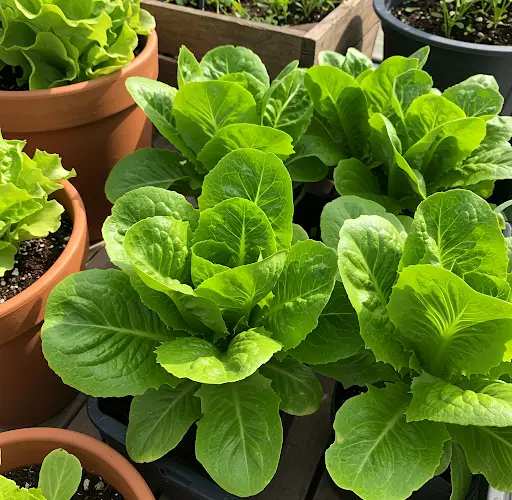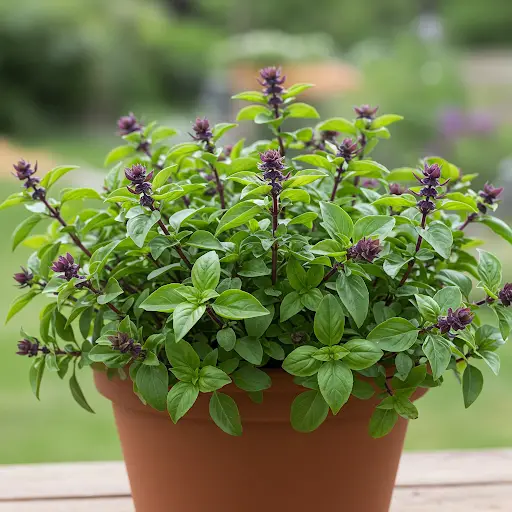Forellenschluss Romaine Lettuce is a beautiful and flavorful variety of lettuce that stands out for its unique speckled leaves and crunchy texture. It’s an excellent addition to any garden, offering both aesthetic appeal and a fresh, delicious taste in salads. Growing Forellenschluss Romaine from seed is relatively easy and can be done even in smaller spaces, such as containers or raised beds. Whether you’re a beginner or an experienced gardener, this step-by-step guide will help you grow vibrant, healthy Romaine lettuce in your garden.
Why Grow Forellenschluss Romaine Lettuce?
Forellenschluss Romaine Lettuce is known for its distinct, reddish-brown speckles on crisp green leaves, which add a pop of color to any dish. Not only is it visually appealing, but it also has a mild, slightly sweet flavor that makes it perfect for salads, wraps, and sandwiches. Here are a few reasons to grow this variety:
-
Compact growth: Romaine lettuce is ideal for small spaces, making it perfect for container gardening, raised beds, or even window boxes.
-
Quick-growing: Romaine lettuce typically matures in about 60–70 days, so you can enjoy a quick harvest.
-
Nutrient-rich: Lettuce is full of vitamins A, K, and C, and it provides a refreshing, low-calorie addition to meals.
Step 1: Start Seeds Indoors
To get a jump start on the growing season, it’s best to start Forellenschluss Romaine Lettuce indoors, particularly if you live in an area with a short growing season. Follow these steps:
-
Timing: Start seeds 4–6 weeks before the last frost date in your area. This gives the seeds time to germinate and grow strong before transplanting them outdoors.
-
Prepare containers: Use small pots, seed trays, or peat pellets filled with a light, well-draining seed-starting mix. Make sure each container has drainage holes to avoid waterlogging.
-
Planting the seeds: Sprinkle the lettuce seeds lightly on top of the soil. Press them gently into the soil, but do not bury them deep. Lettuce seeds need light to germinate, so ensure they stay close to the surface.
-
Watering: Lightly mist the soil to moisten it. Keep the soil consistently moist but not soggy, as excessive moisture can cause the seeds to rot.
-
Light and warmth: Place your seed trays in a sunny spot, or use grow lights if you don’t have enough natural light. Lettuce seeds typically germinate in about 7–14 days at temperatures around 60°F to 70°F (15°C to 21°C).
Once the seedlings emerge, continue providing them with adequate light and warmth. If growing indoors, make sure they get 6–8 hours of light per day.
Step 2: Prepare for Transplanting
After your seedlings have developed a few sets of leaves, it’s time to prepare them for transplanting outdoors. Here’s what you need to do:
-
Harden off the seedlings: Before transplanting, gradually acclimate your seedlings to outdoor conditions. Place them outside for a few hours each day, starting in the shade, and gradually increase the exposure to full sun over the course of a week.
-
Choose your planting location: Forellenschluss Romaine Lettuce prefers full sun but can tolerate partial shade. Choose a location that receives at least 4–6 hours of direct sunlight per day.
-
Soil preparation: Lettuce thrives in loamy, well-draining soil with a slightly acidic to neutral pH (around 6.0 to 7.0). Improve the soil by adding organic compost to provide nutrients.
Step 3: Transplanting to the Garden
Once the danger of frost has passed and your seedlings are strong enough, it’s time to transplant them to your garden or containers. Here’s how:
-
Spacing: Space your lettuce plants about 8–12 inches apart in rows to allow for ample air circulation and growth. If growing in containers, use a large enough container to accommodate multiple plants, spacing them similarly.
-
Planting depth: Dig a hole deep enough to accommodate the root ball of each seedling. Place the seedling in the hole and gently fill it with soil, ensuring the base of the plant is level with the surrounding soil.
-
Watering: Water the plants immediately after transplanting to help settle the soil around the roots. Keep the soil moist but not soggy during the growing season.
Step 4: Care and Maintenance
Once your Forellenschluss Romaine Lettuce is in the ground or containers, regular care will ensure healthy, vibrant plants. Follow these steps:
-
Watering: Lettuce needs consistent moisture to grow well. Water the plants early in the day to avoid fungal diseases, and ensure the soil stays evenly moist. If grown in containers, check the moisture level regularly and water when the top inch of soil feels dry.
-
Fertilizing: Lettuce is a relatively light feeder, but it benefits from occasional feeding. Use a balanced fertilizer (such as 10-10-10) or organic compost once or twice during the growing season to encourage healthy growth.
-
Weeding: Keep the area around your lettuce plants free from weeds, which can compete for nutrients and water. Mulch around the plants to help suppress weeds and retain moisture.
-
Pest control: Keep an eye out for common pests such as aphids, slugs, and snails. Use natural remedies like neem oil or diatomaceous earth to deter pests without harming your plants.
Step 5: Harvesting Your Lettuce
Forellenschluss Romaine Lettuce is ready for harvest when the leaves are crisp and the heads have formed. Here’s how to harvest:
-
When to harvest: Lettuce typically takes 60–70 days to mature. You can begin harvesting when the leaves are large enough to use, or wait until the plant has fully formed a head.
-
How to harvest: Use sharp scissors or garden shears to cut the outer leaves first. Alternatively, for a continuous harvest, you can harvest leaf-by-leaf by cutting the outer leaves and allowing the inner leaves to keep growing.
-
Post-harvest care: After harvesting, refrigerate the leaves immediately to preserve their freshness. Romaine lettuce can be stored in the fridge for up to a week.
Step 6: Continuous Harvesting and Regrowing
Lettuce is a “cut-and-come-again” plant, meaning it can continue producing leaves after being harvested. If you allow the plants to remain healthy, you can enjoy multiple harvests over the growing season. For a continual supply, consider planting new seeds every 2–3 weeks.
Conclusion
Growing Forellenschluss Romaine Lettuce from seed is a simple and rewarding process that can be done even in small spaces like containers. By following these steps, you can enjoy fresh, flavorful lettuce throughout the growing season. Whether you’re harvesting a full head or picking a few leaves at a time, your homegrown Romaine lettuce will be a delicious addition to any meal.



